Adjectives are used to add description to our language. This can cause a bit of confusion for English learners when it comes to choosing the correct one to use in a sentence and deciding where to actually place it.
Luckily, the rules for adjectives are rather easy to learn and remember. To help you along, we’ll cover all of the main topics you need to know to master this important part of English grammar:
- What exactly are adjectives?
- What are the different types of adjectives?
- What order do adjectives go in?
- How do we make comparisons with adjectives?

What Are Adjectives?
Adjectives are descriptive words. We use them to describe the attributes or qualities of a particular thing (a noun). This extra information helps to paint a more specific and detailed picture for the listener or reader:
A tasty pudding
An old lady
The broken toy
Types of Adjectives
1) Attributive
Attributive adjectives are those that are placed directly before the word (or words) they describe:
A big dog ate my homework.
That is a catchy song.
The girl wore a floppy hat.
2) Appositive
Appositive adjectives are placed directly after the noun they describe. As a result, they are surrounded by a pair of commas or dashes to bracket them off from the main sentence:
Her smile, beautiful but sad, was captured in a photograph.
The puppy, energetic and playful, always wanted attention.
Notice that if we take the appositive adjectives away, the main sentence still makes sense. This is a good way to test if you are using them correctly:
Her smile was captured in a photograph.
The puppy always wanted attention.
3) Predicate
Predicate adjectives are placed after the verb “to be” or another linking verb (as you can see in the examples below, a linking verb describes a state of being rather than an action). These adjectives come at the end of the sentence and describe the subject:
The water is cold.
The flowers smell fragrant.
The winner looks proud.
Those clothes are expensive.
She was clever and charming.
The Order of Adjectives
When more than one adjective is used to describe the same noun, they are usually placed in a particular order:
1) Opinion (strange, pretty, interesting)
2) Size (tiny, large, massive)
3) Physical quality (smooth, rough, bumpy)
4) Shape (triangular, circular, square)
5) Age (young, old, middle-aged)
6) Color (green, red, purple)
7) Origin (American, Japanese, Italian)
8) Material (plastic, metallic, wooden)
9) Type (double-sided, adults-only)
10) Purpose (cooking, frying, running)
Here are some examples of how you might use multiple adjectives to describe one noun. Notice how the adjectives follow the order above:
He was a strange old man.
The box had a smooth wooden lid.
She had a pretty Japanese vase.
Present and Past Participles as Adjectives: -ed / -ing
Past participle: He feels relaxed on holiday.
Present participle: His voice is relaxing.
Past participle: She was intrigued by the letter.
Present participle: She found it to be an intriguing letter.
Past participle: The children were bored.
Present participle: The movie was boring.
Degrees of Adjectives
1) Positive degree
The positive degree of an adjective describes a quality without a comparison being made:
Her children are clever.
That building is old.
Their love is eternal.
2) Comparative degree
The comparative degree of an adjective is used to compare two things to each other. There are three basic patterns to learn:
2.1) -er
For short adjectives (usually those with only one or two syllables), the adjective gets an -er ending in the comparative form:
This drink is colder than that one.
Your homework is harder than mine.
Kyoto is older than New York.
2.2) More
For longer adjectives (usually those with two or more syllables), the spelling of the adjective doesn’t change. Instead, you simply add the word “more” before it in the comparative form:
That movie sounds more interesting than the other one.
My new shoes are more comfortable than my old shoes.
Your hair is more beautiful than mine.
2.3) More
Certain adjectives are exceptions to Rules 1 and 2 above. These are typically adjectives that end in “-ed,” “-ing,” or “s,” regardless of whether they are long or short. Luckily, their comparative forms are exactly the same as those in Rule 2. Simply add “more” before them:
My little brother is more tired than I am.
Today was more exciting than yesterday.
She is more jealous than her friend.
3) Superlative degree
The superlative degree of an adjective is the highest or the lowest degree when making a comparison between three or more things. There are two main patterns to learn:
3.1) -est
The inflectional suffix for an adjective’s superlative degree is “-est”:
This is the biggest tent we have.
Kylie is the cutest girl I know.
Who is the cleverest person in the world?
3.2) Most
Longer superlative adjectives usually take the word “most” before them instead of changing the adjective’s spelling:
Communication is the most important part of a relationship.
I had the most relaxing holiday ever.
Who do you think is the most handsome actor?
As you can see in the examples above, we use the definite article “the” before a superlative adjective. This is because the thing we’re describing is being defined as the highest degree of its kind, which makes it specific and definite.
Absolute Adjectives
Sometimes, a quality either exists or it doesn’t. These adjectives are absolute, which means that they don’t have any degrees of comparison.
For example, if something is described as being “perfect,” then by definition it can’t be improved upon: it’s already as good as it can possibly be. You can’t say that something else is “more perfect,” because that simply wouldn’t be logical.
The water was pure.
She has a unique face.
The room was empty.
There are quite a few of these absolute adjectives. To help you build your vocabulary, here are some of the most commonly used ones you’ll come across:
| absolute | absent | alive |
| basic | best | boundless |
| complete | certain | central |
| dead | devoid | definite |
| entire | essential | excellent |
| fatal | full | final |
| gone | guilty | grave |
| harmless | halfway | hopeless |
| immortal | ideal | infinite |
| lacking | local | last |
| merciless | main | meaningless |
| obvious | obscure | obvious |
| pure | partial | perfect |
| square | superior | silent |
| temporary | thorough | total |
| unique | ultimate | universal |
Need Help with English Grammar?
For more help with your English grammar, have a look at our resource page for the best guides and books around!
Stay in Touch!
Do you want to learn how to read, write, and speak English with confidence? Are there any grammar rules that you find hard or confusing? Drop us a comment to let us know and we’ll help you in your journey to learn English!
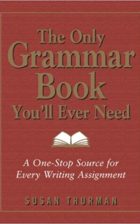
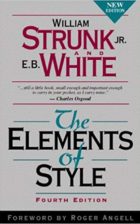
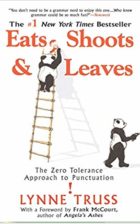

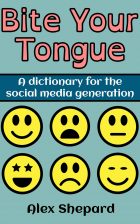
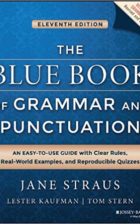
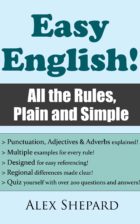
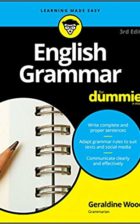
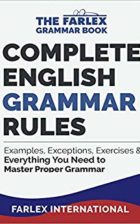
This is really helpful, thank you. I get confused when I want to use more than one adjective. I always worry that I get them mixed up and then decide to just use one instead.
Are superlative adjectives only used when you make a comparison between three or more things? Or can you also use them when you’re comparing two things?
Hi Kumail,
For superlatives, there always has to be at least three things in the group of what you’re comparing. This is because you are describing something that is the highest degree of its kind. On the other hand, if you’re only comparing two things, you always use the comparative form because it’s a direct one-to-one comparison.